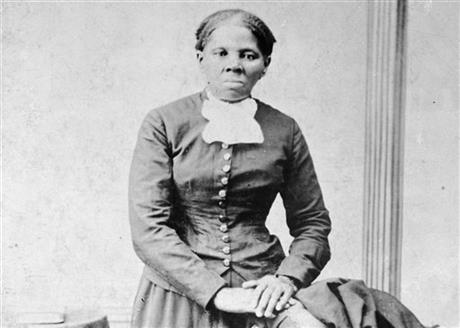
This image provided by the Library of Congress shows Harriet Tubman, between 1860 and 1875. A Treasury official said Wednesday, April 20, 2016, that Secretary Jacob Lew has decided to put Tubman on the $20 bill, making her the first woman on U.S. paper currency in 100 years.
WASHINGTON (AP) — Harriet Tubman, an African-American abolitionist who was born a slave, will stand with George Washington, Abraham Lincoln and Benjamin Franklin as among the iconic faces of U.S. currency.
The $20 bill will be redesigned with Tubman’s portrait on the front, marking two historic milestones, Treasury Secretary Jacob Lew announced Wednesday. She will be the first African American on U.S. paper money and the first woman depicted in 100 years.
The leader of the Underground Railroad will replace the portrait of Andrew Jackson, the nation’s seventh president and a slave owner, who will be pushed to the back of the bill.
Lew also settled the backlash that had erupted after he announced an initial plan to remove Alexander Hamilton, the nation’s first Treasury secretary, from the $10 bill in order to honor a woman.
Hamilton will remain on the $10 note, Lew said.
Instead, the Treasury building on the back of the bill will be replaced with leaders of the suffrage movement to give women the right to vote, including Lucretia Mott, Sojourner Truth, Susan B. Anthony, Elizabeth Cady Stanton and Alice Paul.
The $5 bill will also undergo change. The illustration of the Lincoln Memorial on the back of the will be redesigned to honor “events at the Lincoln Memorial that helped to shape our history and our democracy.” The new image will include civil rights leader Martin Luther King Jr., Eleanor Roosevelt and Marian Anderson.
An online group, Women on 20s, said it was encouraged that Lew was responding to its campaign to replace Jackson with a woman. But it said it would not be satisfied unless Lew also committed to issuing the new $20 bill at the same time that the redesigned $10 bill is scheduled to be issued in 2020.
The $10 bill is the next note on Treasury’s redesign calendar, and it aims introduce updated protections against counterfeiting. That redesign was scheduled to be unveiled in 2020, which marks the 100th anniversary of women gaining the right to vote. Lew had often cited that connection as a reason to put a woman on the $10 bill.
However, the effort ran into strong objections from supporters of Hamilton, who is enjoying renewed pop culture interest with the hit Broadway musical “Hamilton.”
Tubman, who was born into slavery in the early part of the 19th century, escaped and then used the network of antislavery activists and safe houses known as the Underground Railroad to transport other slaves to freedom. After the Civil War, Tubman, who died in 1913, became active in the campaign for women’s suffrage.
Various groups have been campaigning to get a woman honored on the nation’s paper currency, which has been an all-male domain for more than a century.
The last woman featured on U.S. paper money was Martha Washington, who was on a dollar silver certificate from 1891 to 1896. The only other woman ever featured on U.S. paper money was Pocahontas, from 1865 to 1869. Susan B. Anthony and Sacagawea are on dollar coins.











